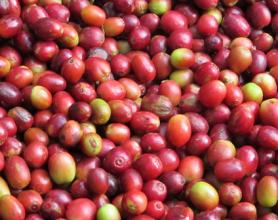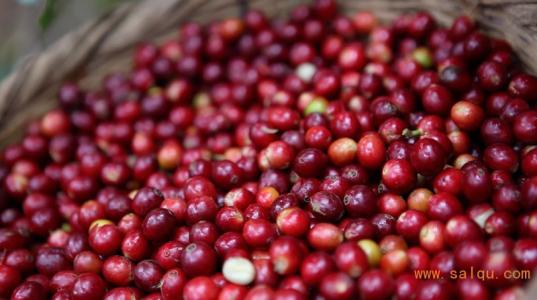Description of the characteristics and Flavor of Ethiopian Coffee Bean
Description of the characteristics and Flavor of Ethiopian Coffee Bean
Oxfam, a well-known international charity, visited the village of Ferro in Sidamo, a coffee region in Ethiopia, and found that farmers were dressed in rags and had no shoes to wear, lived in shacks of mud and thatch to protect themselves from the wind and rain, and made a living on their own fruits and vegetables for three meals. The voice of the farmers is: "We are angry at being exploited, but to whom should we cry?" Oxfam also allocated an abacus for the villagers: in the six years of ○○, 2432 coffee farmers in Feluo Village produced a total of 300000 pounds of sun-dried beans, with an average payment of US $123. but each person had to hand over US $20 to coffee cooperatives and trade unions to cover related road public construction and administrative costs. To support a family of four for the whole year, it is no wonder that hungry people beg everywhere. Starbucks was kind enough to donate US $15000 to reward villagers for producing high-quality coffee, giving each farmer an extra US $6.20, but it was still not enough to make ends meet. Oxfam points out that 45% of the end price of boutique coffee in central and south America goes into the pockets of coffee farmers, but Ethiopian farmers get only 5%, 10%, which is obviously on the low side.
There is such a local custom that no matter how poor people are, they must have a coffee pot and a charcoal stove. Why? Because the local people think that coffee is something they have to make every day, just like we smoke. Smokers like us, basically, for example, we can skip three meals a day, but this cigarette must be smoked. It's the same with them. They just don't have to eat one day, but I have to drink coffee because they think this coffee is a tool and bridge between them and God. No matter how poor they are, they will have a coffee pot and a charcoal stove. For example, if the guest is a guest at the host's house, then if the male host does not get up after you go in, then you can leave. Why? It means you're not welcome. Well, if the host entertains you very, very warmly after you go in, it means he likes you very much. Then the hostess will stir-fry some in the pan, such as green beans and popcorn, and use this as a snack, and then you will sit and chat with the male host, smoking or chatting. And then what happens to the hostess? She will start stir-frying coffee beans now. They are very, very fragrant. Then immediately put the fried coffee beans on a tool like our garlic tool. She put it in there, mashed the coffee beans, then put it in this charcoal stove, mixed it with water and began to brew this coffee. Ethiopian coffee can be called really very fragrant.

Important Notice :
前街咖啡 FrontStreet Coffee has moved to new addredd:
FrontStreet Coffee Address: 315,Donghua East Road,GuangZhou
Tel:020 38364473
- Prev

Introduction of Panamanian Coffee Bean varieties Grinding scale Regional Flavor Manor
Outside the superior ecological conditions of the Pokuit region of Panama and the fertile volcanic ash soil of the Baru volcanic land. Another important factor is that the microclimate in the Poquet Heights of Panama is a unique and important resource for boutique coffee in the Pokuit region; this is the environment of Panama from east to west that allows the cold air to converge above 6500 feet through the Central Mountains, thus in Pokuit.
- Next

How can the bean grinder break without movement?
Gold Mantenin, the Japanese adopted more stringent quality control more than a decade ago. After picking beans manually for four times, they eliminated defective beans and produced gold mantenin with dark green color and equal appearance of beans, creating another wave of market demand. Even Europe and the United States are crazy about it. The aged Agedmandheling is as sweet as honey. The successful old bean has worn away Manning's inelegant sour taste.
Related
- Detailed explanation of Jadeite planting Land in Panamanian Jadeite Manor introduction to the grading system of Jadeite competitive bidding, Red bid, Green bid and Rose Summer
- Story of Coffee planting in Brenka region of Costa Rica Stonehenge Manor anaerobic heavy honey treatment of flavor mouth
- What's on the barrel of Blue Mountain Coffee beans?
- Can American coffee also pull flowers? How to use hot American style to pull out a good-looking pattern?
- Can you make a cold extract with coffee beans? What is the right proportion for cold-extracted coffee formula?
- Indonesian PWN Gold Mandrine Coffee Origin Features Flavor How to Chong? Mandolin coffee is American.
- A brief introduction to the flavor characteristics of Brazilian yellow bourbon coffee beans
- What is the effect of different water quality on the flavor of cold-extracted coffee? What kind of water is best for brewing coffee?
- Why do you think of Rose Summer whenever you mention Panamanian coffee?
- Introduction to the characteristics of authentic blue mountain coffee bean producing areas? What is the CIB Coffee Authority in Jamaica?

